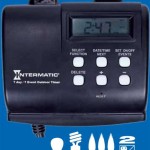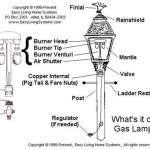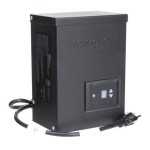Outdoor Security Light Adjustment
Outdoor security lighting plays a crucial role in deterring criminal activity and enhancing the safety of homes and businesses. Proper adjustment ensures the lights effectively illuminate vulnerable areas without causing unnecessary disturbance to neighbors or contributing to light pollution. This article provides practical guidance on adjusting outdoor security lights for optimal performance and neighborly consideration.
Understanding Light Types and Features
Different types of security lights offer varying levels of adjustability. Traditional floodlights often feature adjustable brackets that allow users to change the light's direction both vertically and horizontally. More sophisticated models may incorporate motion sensors with adjustable sensitivity and range, further customizing the light's activation. Understanding the specific features of your security light is crucial for effective adjustment.
Safety Precautions Before Adjustment
Prior to any adjustments, ensure the power supply to the light fixture is completely disconnected. This prevents electrical shocks and ensures safe handling during the adjustment process. Utilizing a stable ladder or platform for elevated lights is also essential for safe access. If unsure about any aspect of the process, consulting a qualified electrician is recommended.
Aiming for Effective Coverage
The primary goal of security lighting is to illuminate vulnerable entry points such as doors, windows, and pathways. Direct the light beam towards these areas, ensuring even coverage without creating dark shadows that could conceal intruders. Avoid aiming the light directly at neighboring properties, as this can cause unwanted glare and disturbance.
Adjusting Motion Sensor Sensitivity
Motion sensors play a crucial role in automating security lighting. Adjusting the sensor's sensitivity helps fine-tune its responsiveness to movement. Higher sensitivity settings trigger the light with even slight movements, potentially leading to frequent activation from small animals or passing vehicles. Lower settings require more significant movement to trigger the light, reducing false alarms. Finding the optimal sensitivity setting requires observation and adjustment based on the specific environment.
Managing Light Spread and Intensity
Excessive light spread can contribute to light pollution and negatively impact neighbors. Adjustable shields or visors on some security lights help control the light beam's spread, directing it towards the desired area and minimizing spillover. Similarly, adjusting the light's intensity can optimize its effectiveness. In some cases, lower intensity might be sufficient for deterring intruders while minimizing light pollution.
Considering Neighboring Properties
Responsible lighting practices involve considerate placement and adjustment that minimizes impact on neighboring properties. Before installing or adjusting security lights, assess their potential impact on neighbors. Open communication with neighbors regarding lighting concerns can prevent disputes and foster a sense of community. Adjusting lighting to avoid direct illumination of neighboring windows and bedrooms is a crucial step in maintaining positive neighborly relations.
Regular Maintenance and Testing
After initial adjustment, periodic checks and adjustments are necessary to maintain optimal performance. Environmental factors such as tree growth or changes in landscaping can require re-aiming the lights. Regularly testing the motion sensors and light functionality ensures the system remains effective in providing security.
Utilizing Timers and Schedules
Many modern security lights offer timer and scheduling functionalities. These features allow users to customize when the lights activate, maximizing energy efficiency and minimizing unnecessary light during specific hours. Utilizing these features can further reduce the impact on neighbors and contribute to responsible lighting practices.
Addressing Light Trespass Issues
Light trespass occurs when light spills onto neighboring properties, causing unwanted illumination. Addressing light trespass often involves adjusting the light's direction, adding shields to control the light beam, or reducing the light's intensity. Local ordinances may regulate outdoor lighting, and it's important to comply with these regulations to avoid potential violations.
Seeking Professional Assistance
For complex lighting setups or when dealing with specific concerns, seeking professional advice from a lighting specialist or electrician can be beneficial. They can provide expert guidance on light placement, selection, and adjustment, ensuring optimal performance and compliance with local regulations.

Security Light Installation Part 11 How To Troubleshoot And Reset Your Pir

120 Led Solar Security Light Black Spv Lights

How To Adjust Security Lights Lighting And Ceiling Fans The Home Depot

Motion Sensor Lights Tips To Reset Detector

Security Outdoor Solar Motion Sensor Light 10w 20w Cob Led

Lightdot Led Security Lights Motion Sensor Light Outdoor 38w 3800lm O

Orein Motion Sensor Outdoor Lights 450 Wide Adjustment Smart Wifi Flood Ligh

Eti 240 Degree Led Motion Sensor Light Outdoor Broe 3 Head Flood Security 1800 To 3600 Lumens Driveway Walkway 514032110 The Home Depot

Brightown 4500 Lumen Led Flood Light Outdoor With Remote 42w Motion Sensor Security Lights 3 Mode Adjustable 3000k 6500k White Warm Color Adjustment Ip65 Waterproof For Garage Com

How To Adjust Security Lights Lighting And Ceiling Fans The Home Depot
Related Posts







